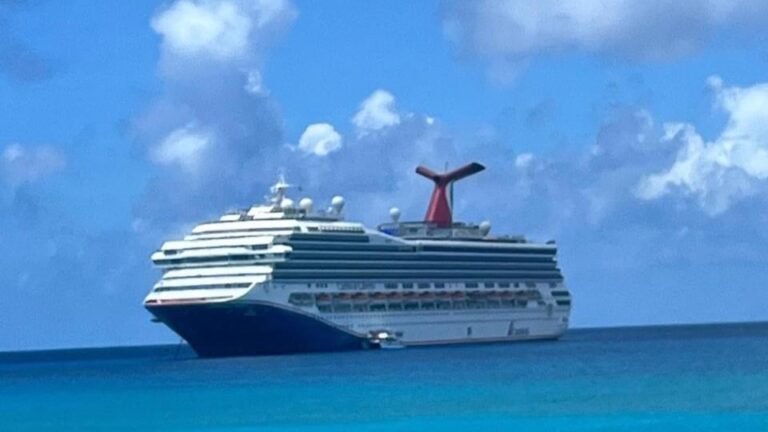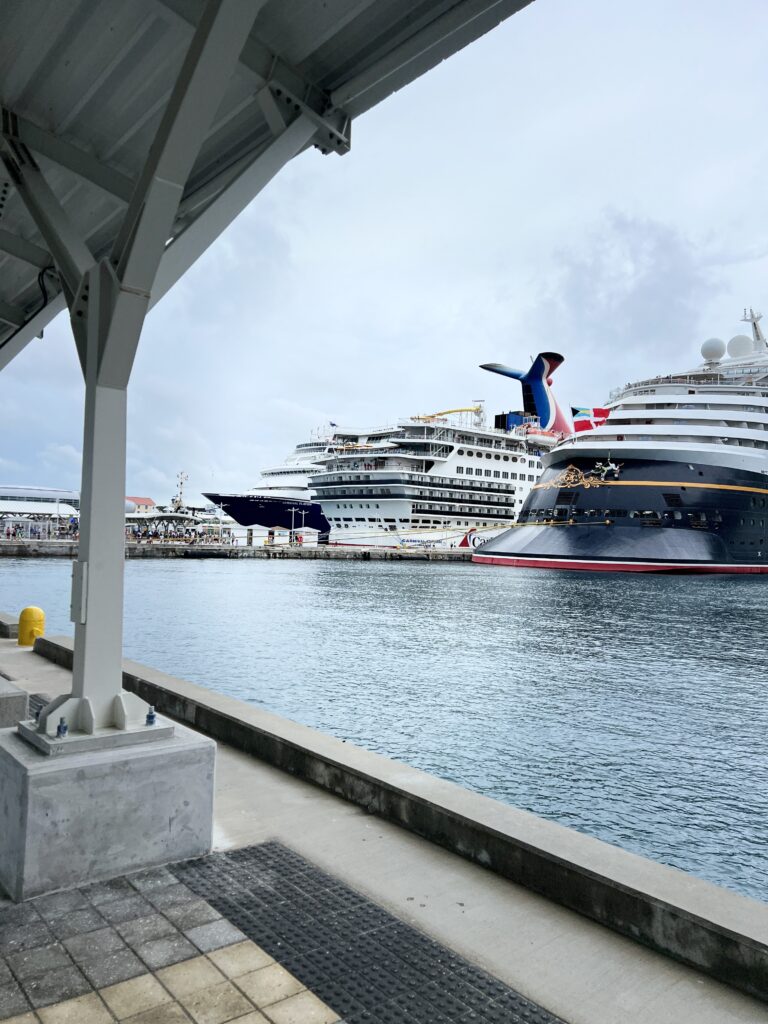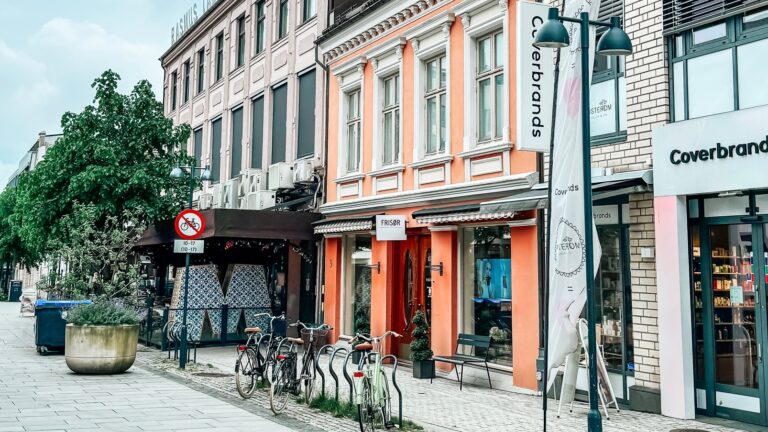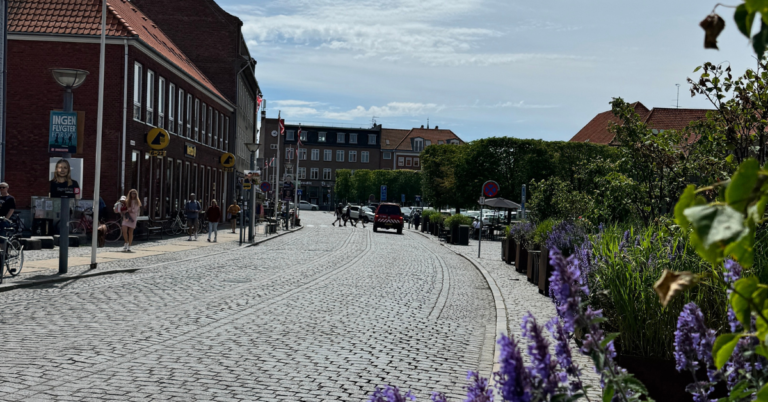Discovering the History and Charm of the Tallinn Cruise Port
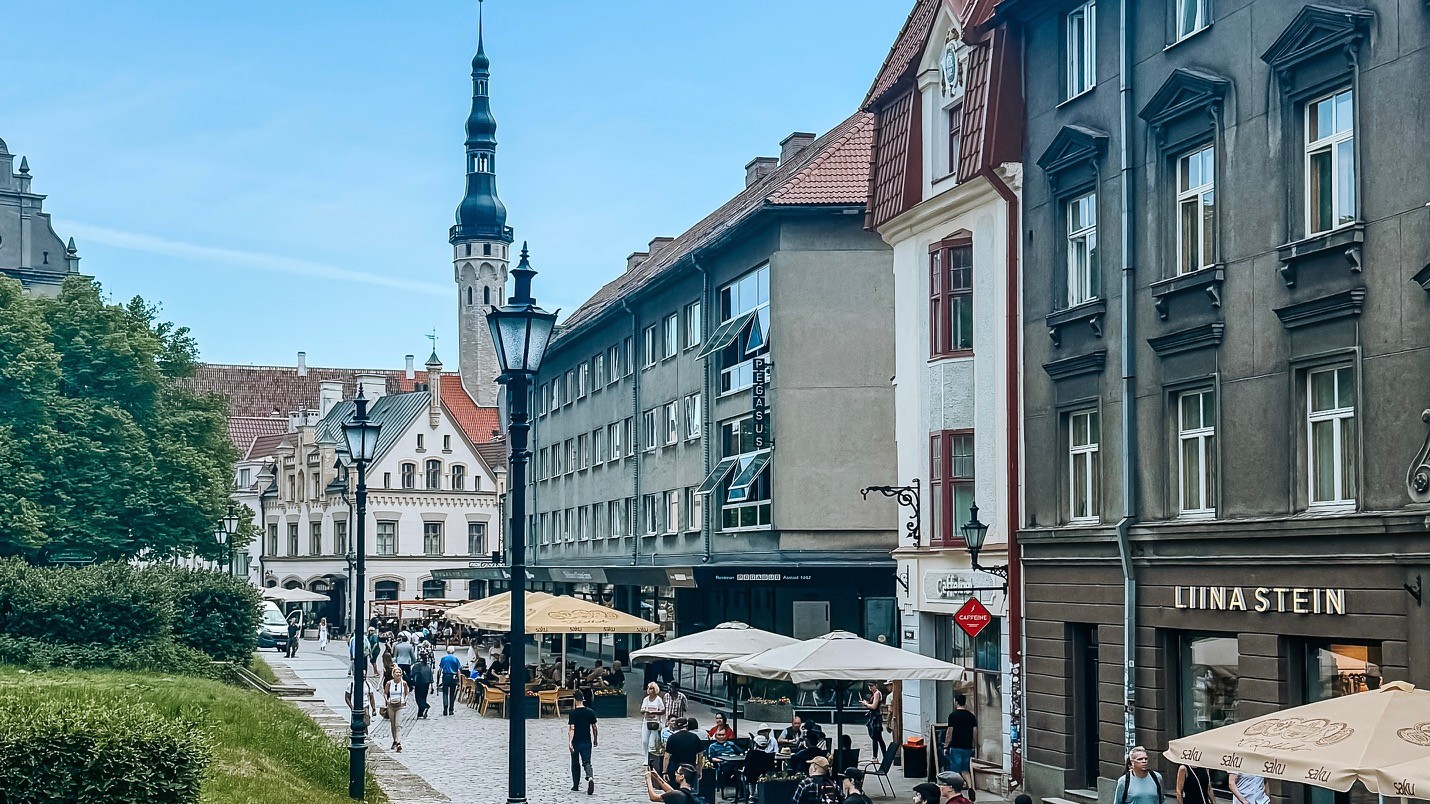
Tallinn, the capital of Estonia, is a picturesque city known for its well-preserved Old Town, featuring cobblestone streets, historic buildings, and ancient city walls. Blending old-world charm with modern innovation, Tallinn is one of the more unique cruise ports (and probably my favorite) on a recent Baltic cruise. If you’re a fan of Medieval times, you’ll love Tallinn. Many cruise lines, such as Norwegian, Princess, and Holland America Line call here, and I visited aboard Holland’s Zuiderdam.
Related: Check out my video review of Zuiderdam.
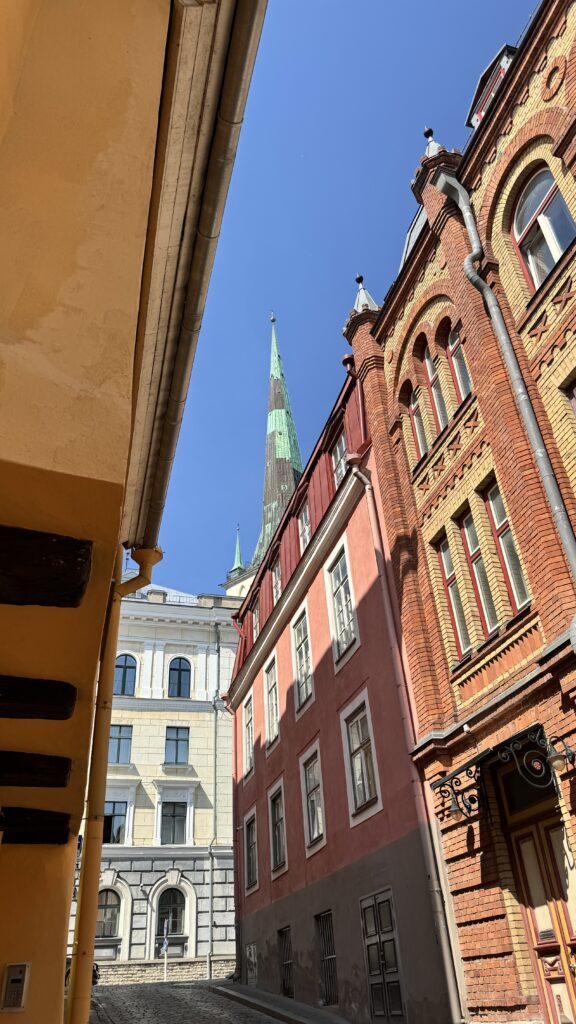
It wasn’t until the end of my visit here, and referring to it as “Tal-in” the entire time, that I realized my pronunciation was wrong. Oop. Tallinn is pronounced as “TAH-leen.” The emphasis is on the first syllable, with a short “a” sound, similar to “tall,” followed by a short “ee” sound in the second syllable.
Tallinn was an unexpected favorite for me, and this is why I love cruising. I likely never would have prioritized a trip to Tallinn or Estonia in general as a sole destination — it just wasn’t at the top of my “must travel” list, nor was it even really on my radar at all. And I then would have missed this hidden gem.
I love Tallinn so much because it offers a unique blend of modern and historic, and you can enjoy a wonderful day here without dropping major coin on an expensive cruise line excursion. The Port of Tallinn is one of the largest Baltic Sea complexes, handling passengers and cargo. It operates four harbors in Estonia. Of the four, only two are for passengers, and cruisers will likely berth at the Old City Harbor.
Tallinn Cruise Port to City Center
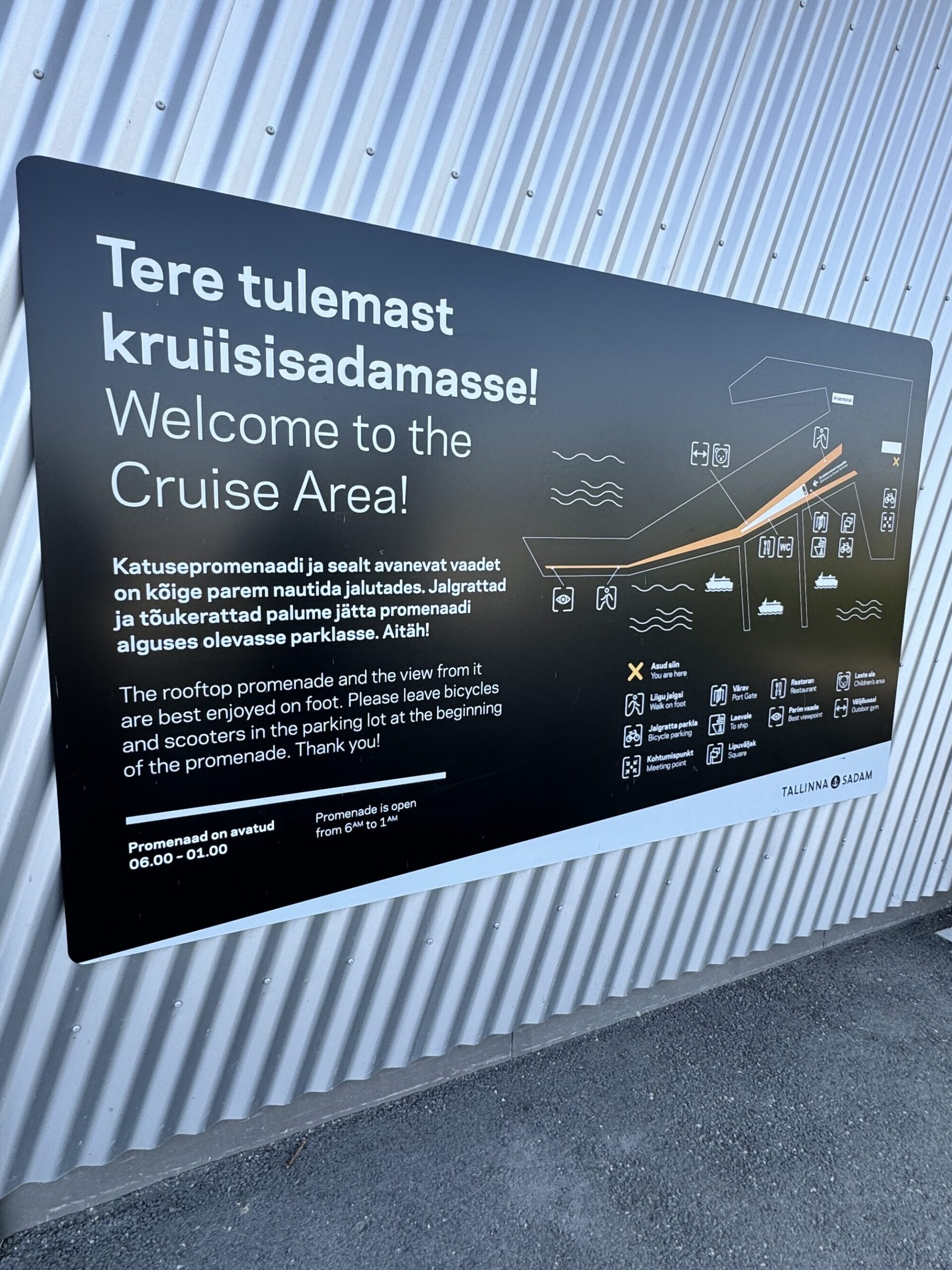
While I recommend exploring Tallinn on foot, the cruise terminal isn’t as close to the historic city center as other ports on my Baltic cruise itinerary. From the terminal to the heart of Old City, the Tallinn Tourist Information Centre, for instance, is about a 35-minute walk. If you visit the historic area, expect many hills, slopes, and cobblestone streets.
Holland America Line offers an optional shuttle service to its cruisers, providing transportation from the cruise terminal to Mere Boulevard for $19.95 for unlimited use throughout the day, with shuttles running every 30 minutes. I chose to save money and walk. On the day of my visit, however, it was quite hot, and significant construction was happening in the area blocking many of the pedestrian walkways, so I had serious regrets about my decision to walk. So, in retrospect, my advice is to utilize your cruise line shuttle option!
Pro tip: If you do choose to walk, the Contemporary Art Museum of Estonia is right outside the cruise terminal area, and offers free admission, so it’s worth a quick stop if you’re into modern art.
Ride-share services like Uber are available here, which was fortunate for me since I ended up using this to get back to the ship after a very long and hot day with lots of walking. I was tired! The cost of this one-way Uber from the city center to the port was under $14 USD, which I gladly paid. Taxis are also available in Tallinn, although not always easily accessible or readily available, even at the cruise terminal.
Public transportation is another great way to get around and is both accessible and affordable, and a unique option is to rent a bike at the cruise terminal and explore that way with a guided tour, although this choice of course requires some degree of physical fitness.
Top Things to Do in Tallinn
European cruise excursions tend to be quite expensive and somewhat limited, so if you’re looking for things to do in Tallinn, here are some of the top choices. You’ll likely find some of these offered as official cruise line excursions, or you can venture out and explore them on your own. Just make sure you’re aware first of the pros and cons (and risks) of independent excursions.
Old Town
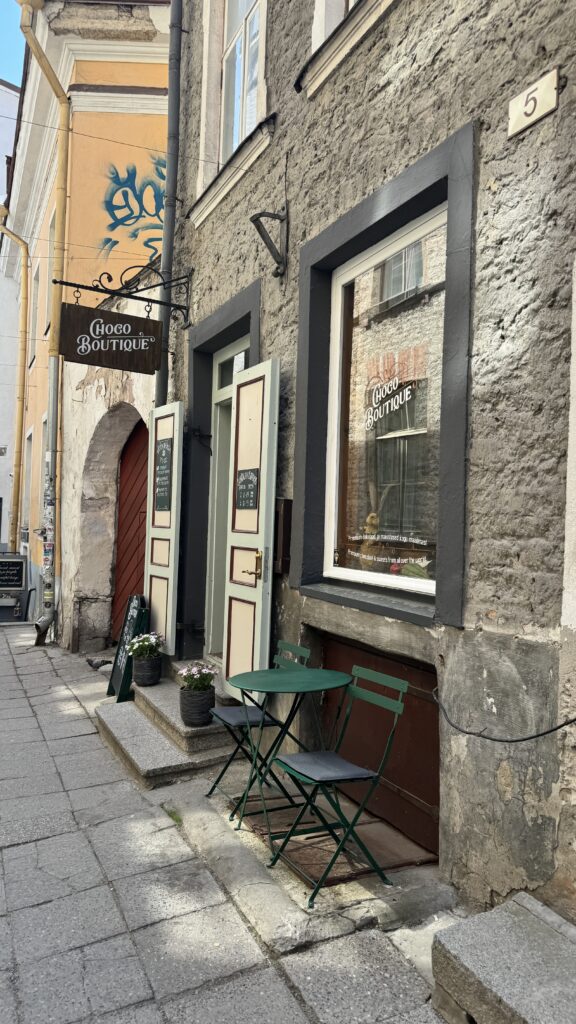
As noted above, most cruise ships dock close to Tallinn’s historic Old Town. There’s so much to do and see here (much of it for free!) that one could easily spend an entire day just exploring this area. You can do it on your own or book a guided tour. Cruise lines offer guided tours as excursions, but booking independently will be significantly cheaper.
In Old Town, you can wander through cobblestone streets and visit historic landmarks like Toompea Castle atop Toompea Hill and Aleksander Nevski Cathedral. St. Olaf’s Church Tower is a medieval church in Old Town where guests can climb its tower to see breathtaking views of Tallinn. As you explore, find and stroll through St. Catherine’s Passage, which is a charming medieval alley lined with artisan workshops and historic buildings. Stop by Kiek in de Kök, a historic artillery tower that offers insight into the city’s medieval fortifications and provides visitors with panoramic views of the surrounding area.
The heart of this area is Old Town Square, or “Tallinna Raekoja Plats.” This is the central and historic part of the city, surrounded by medieval buildings and notable landmarks. It’s a must-visit part of Old Town, and while there, don’t miss a stop by Tallinn’s Raeapteek, one of the oldest continuously operating pharmacies in Europe,
There are so many landmarks jam-packed here, some free to see and explore and others that charge an admission fee, that I recommend stopping by the Tallinn Tourist Information Center for a map. While there, consider buying a Tallinn Card to experience multiple sites, museums, and attractions at a significantly discounted price (you can also buy one in advance online).
Kadriorg District

Old Town isn’t the only area worth exploring. Not far, about 2 miles away, is Tallinn’s Kadriorg District. Kadriorg is a picturesque district known for its grand baroque Kadriorg Palace, built by Peter the Great, and its expansive, beautifully landscaped Kadriorg Park. The area is a cultural hub, housing several museums, including the Kumu Art Museum, and offers a tranquil escape with its lush gardens and scenic pathways.
Estonia Maritime Museum
The Eesti Meremuuseum, or Estonian Maritime Museum, is a prominent museum located in the Seaplane Harbour in Tallinn. It features extensive and interactive exhibits on Estonia’s maritime history, including historic ships, seaplanes, and interactive displays. The museum provides an engaging and educational experience, highlighting the country’s seafaring heritage and technological advancements.
Tallinn’s Seaplane Harbour (Lennusadam) is part of the Estonian Maritime Museum. It serves as one of the main exhibition spaces, showcasing a variety of maritime artifacts, historic ships, and seaplanes within its impressive seaplane hangars. Be sure to check hours and availability, though, as in 2024, the museum was closed for much of the year due to extensive renovations.
Modern Tallinn
An interesting duality of Tallinn is that after exploring the Medieval history of its Old Town and other historic regions, you step out into a modern part of Tallinn, characterized by its contemporary architecture and bustling commercial districts, which stand in stark contrast. Modern Tallinn features modern office buildings, residential complexes, and shopping centers like Ülemiste Centre, one of the largest malls in Tallinn and one that I personally visited in a desperate quest to find hair dye (oh, those grays! haha). With a wide range of shops, restaurants, and entertainment options, it is a vibrant hub and worth a visit if time permits.
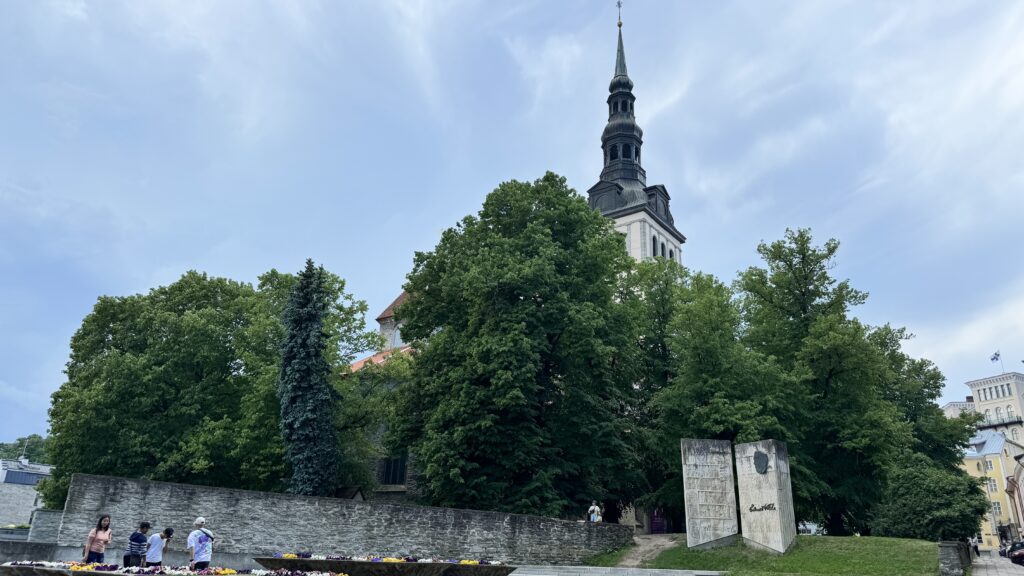
Language and Currency in Tallinn
The official language of Tallinn and the entire country of Estonia is Estonian, although many residents also speak English, especially in tourist areas. During our visit, all of the vendors we interacted with were fluent in English.
The official currency in Tallinn and throughout Estonia is the Euro (€), and most vendors do not accept US currency. Credit cards are widely accepted, and in most European locations, tap-to-pay or contactless payment is becoming very common and quite convenient. A tap-to-pay credit card, also known as a contactless card, allows users to make payments quickly and securely by simply tapping the card against a contactless-enabled payment terminal, eliminating the need to swipe or insert the card and enter a PIN.
Tallinn Cruise Port Ship Schedule
The Tallinn, Estonia cruise ship schedule can be found directly on the Port of Tallinn website.
Tallinn Time Zone
Keeping track of time zones can get complicated when cruising, especially for Americans on European cruises with substantial time zone differences, and itineraries may result in time changes during the cruise. Your captain will make announcements during the cruise to update you on these changes, but it’s good to be aware of these differences ahead of time when planning your stop at the port, especially for excursions.
Tallinn follows Eastern European Time (EET), which is UTC+2 during standard time, and Eastern European Summer Time (EEST), which is UTC+3 during daylight saving time. However, please note that time zones and daylight saving time rules may change, so it’s always a good idea to double-check the current local time when planning travel or activities.
Many cruise lines operate on “ship time” corresponding with the embarkation point, so if your cruise sails from Amsterdam or Ijmuiden, which follows Central European Time (CET) zone.


